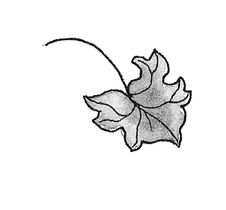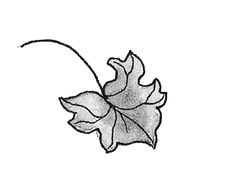China Bayles' Book of Days (67 page)
Read China Bayles' Book of Days Online
Authors: Susan Wittig Albert
Tags: #Fiction, #Mystery & Detective, #General

• Willow (
Salix sp.
). A tea made of the bark of the willow reduces the pain and inflammation of rheumatism and arthritis. Its chief constituent, methyl salicylate, is the primary ingredient in aspirin.
• Dandelion (
Taraxacum officinale
). A useful herb, dandelion has been shown to stimulate the flow of liver bile. Nicholas Culpeper (who assigned this plant to Jupiter) says it is “very effectual for removing obstructions of the liver, gall bladder, and spleen.”
• Sage (
Salvia officinalis
). Sage has been used for centuries as a powerful preservative; research indicates that it contains antioxidants, which slow spoilage. Sage is used to treat wounds, ease gastrointestinal complaints, and heal sore throat and bleeding gums.
• Other Sagittarius herbs include dock (another traditional liver herb); lime blossom, meadowsweet (also contains methyl salicylate and can be used to treat rheumatism); costmary; chicory.
O! Mickle is the powerful grace that lies
In herbs, plants, stones and their true qualities;
For nought so vile that on the earth doth live
But to the earth some special good doth give.
—WILLIAM SHAKESPEARE, ROMEO AND JULIET

NOVEMBER 23
Today is National Eat a Cranberry Day.
Cranberries for Health
The health benefits of cranberries (
Vaccinium macrocarpon
) have become more widely recognized over the past two decades, as researchers confirm what many have already known: these tart red berries can prevent urinary tract infections and reduce the risk of kidney stones. And recently, a compound in cranberry juice has been found to be effective against plaque-forming bacteria that cause gingivitis and gum disease. The herb has been in long use: Native Americans applied crushed cranberries to wounds and used them to treat scurvy, a disease caused by a lack of vitamin C. If you’re using cranberries medicinally, choose pure cranberry juice, not one of the many “cocktails” currently on the supermarket shelf.
SPICED CRANBERRY ORANGE SAUCE
1 pound fresh cranberries, rinsed and picked through
¾ cup sugar
juice and zest of 1 large orange (leave the zest in large
pieces)
½ teaspoon ground ginger
¼ teaspoon nutmeg
4 cloves, stuck into a section of orange rind for
easy removal
1 3-inch cinnamon stick, broken
½ cup light red wine
Combine ingredients in a large saucepan. Bring to a boil; reduce heat and simmer for about 10 minutes, stirring occasionally, until cranberries pop and sauce thickens. Remove from heat and let cool. Remove cinnamon, cloves, and zest. Pour sauce into a bowl and chill. Serves 10. You can make this several days ahead and refrigerate it. A zingy, healthful sauce for that special turkey!
CAROLEE’S CRANBERRY CORDIAL
1 pound fresh or frozen cranberries, chopped
3 cups sugar
3 cups light rum
2 sprigs rosemary
2-3 rose geranium leaves
Combine cranberries, sugar, and rum. Place in a clean jar with rosemary and rose-geranium leaves. Cover and place in a cool, dark place, shaking every few days. After 4 weeks, strain the liquid, bottle, and serve. Use the strained cranberries in nut breads, cookies, compotes, chicken salad, or over ice cream. (Thanks, Carolee! For Carolee’s Herb Farm, see June 22.)
Children can very early be taught to take all the care of their own clothes. They can knit garters, suspenders, and stockings; they can make patchwork and braid straw; they can make mats for the table, and mats for the floor; they can weed and garden, and pick cranberries from the meadow, to be carried to market.
—MRS. CHILD, THE AMERICAN FRUGAL HOUSEWIFE
NOVEMBER 24
Thanksgiving occurs just about now.
If the only prayer you said in your whole life was “thank you,” that would suffice.
—MEISTER ECKHART
A Thanksgiving Potpourri for Sharing
Here’s a worthwhile craft that will keep the kids occupied while you’re busy with Thanksgiving dinner—unless, of course, they’ve been assigned to knit garters or pick cranberries.
This recipe for enjoy-it-and-toss-it-out potpourri is only a list of suggestions. Encourage the children to find other things to put into it that will be pretty to look at for a day or two and be beneficial to the birds, squirrels, and other wild creatures when they toss it into the backyard. They’ll also enjoy arranging it in pretty bowls or baskets around the house. This potpourri is not scented; if you want fragrance, put scented potpourri into a smaller bowl and nestle it into the center of the larger one, surrounded by this natural mix.
POTPOURRI FOR SHARING
sage leaves, fresh or dried
goldenrod flowers
dried strawflowers or chrysanthemums
sunflower seeds
pumpkin seeds
squash or melon seeds
seed pods collected from the garden
shelled or unshelled nuts
popped corn
acorns
pieces of dried orange and lemon peel
dried cranberries or other dried berries
ears of Indian corn
bits of fern, twigs
pretty autumn leaves
Recipe for Goose Stuffing: Take 4 apples, peeled and cored, 4 onions, 4 leaves of sage, and 4 leaves of lemon thyme not broken, and boil them in a stew pan with sufficient water to cover them; when done, pulp them through a sieve, removing the sage and thyme; then add sufficient pulp of mealy potatoes to cause it to be sufficiently dry without sticking to the hand; add pepper and salt, and stuff the bird
—MRS. BEETON’S BOOK OF HOUSEHOLD MANAGEMENT, 1861

NOVEMBER 25
Today is the beginning of the Celtic Month of Elder, according to some sources.
If you chop an elder tree or fell it, or if you want blossoms or fruit, you must say “Please, Mother Elder, may I have . . .”
—ROY VICKERY, OXFORD DICTIONARY OF PLANT-LORE
Respect Your Elder Mother
Elder (
Sambucus sp
.)—a familiar, common shrub, flourishing in ditches and marshy areas—has for centuries been held sacred throughout England. And while it is a valuable plant, using any part of it without asking permission was courting trouble, for the tree was the dwelling of the “Elder Mother” (Elle or Hylde-moer in Scandinavian and Danish myth), who took offense if any of her trees were harmed.
But the elder must have been generous with her permissions, for everything about this plant, from root to twig-tip, has been put to use. The flowers, roots, leaves, and bark have been brewed, stewed, steeped, pickled, bundled, and minced, serving a wide variety of medicinal purposes. Modern research suggests that elder extract is effective for coughs, colds, and flu. Elder branches (often said to be poisonous) have been used to witch water, and twigs were often hung over the door to keep witches away. A branch buried with a corpse fended off vampires, and a hollowed-out stick could be turned into a Pan pipe.
The flowers were fermented to make ale, wine, and beer, and were battered and fried as fritters. The berries (often called “the Englishman’s grape”) were turned into sauce, ice cream, jelly, and pie. Here’s a traditional jelly recipe. If you pick the elderberries, be sure to say please first and thank-you afterward. The Elder Mother will appreciate it.
ELDERBERRY JELLY
2 quarts elderberries, washed, stems removed
2 cups water
1 box pectin
5 cups sugar
Bring the berries and water to a boil on a large, nonreactive saucepan. Simmer until berries are soft. Strain through a jelly bag or cheesecloth; for clear jelly, do not squeeze. You should have 3½ cups of juice; if not, pour a little water through the crushed berries. Return 3[h] cups elderberry juice to pan. Add pectin to the juice and bring to a boil. Stir in the sugar and bring to a full rolling boil. Boil for 1 minute. Remove from heat, skim and pour into hot sterilized jars. Seal with hot paraffin immediately.
Elder Vinegar. Put dryed Elder flowers into Stone or double Glass Bottles, fill them up with good Wine Vinegar, and set them up in the sun or by the Fire till their Virtue is extracted.
—THE RECEIPT BOOK OF JOHN NOTT,
COOK TO THE DUKE OF BOLTON, 1723
NOVEMBER 26
Many of us miss all that is most worth learning in old books through regarding anything in them that is unfamiliar as merely quaint, if not ridiculous. . . . There is only one way of understanding these old writers, and that is to forget ourselves entirely and to try to look at the world of nature as they did. It is not “much learning” that is required, but sympathy and imagination.
—ELEANOUR SINCLAIR ROHDE, THE OLD ENGLISH HERBALS
Old Herbals
I have always been passionate about books. Among my favorites are books about herbs—not the glossy coffee-table books that have flooded the market since the herb “renaissance” began in the late 1980s, but earlier books, which I’ve collected in inexpensive reprints and facsimiles.
There’s plenty to enjoy in these little volumes. In my facsimile edition of the 1833
American Frugal Housewife,
for example, Mrs. Child tells us that “a poultice made of ginger or of common chickweed, that grows about one’s door in the country, has given great relief to the toothache,” and that “plantain leaves laid upon a wound are cooling and healing.” A century later, Helen Morgenthau Fox (in
Gardening with Herbs for Flavor and Fragrance,
1933) prints an “old” recipe for “Marigold Custard” that I’ve never seen anywhere else. (I’ll include it in tomorrow’s entry.) Eleanour Sinclair Rohde (
The Old English Herbals
, 1922) offers a careful review of all the important herbals from the eighth to the seventeenth century, and Rosetta Clarkson’s
Green Enchantment
(1940) tells intriguing stories about early garden tools and flowers in herbal medicines. Fascinating, every page.
•
Old Time Gardens,
by Alice Morse Earle, 1901, reprinted 2005
•
The Book of Herbs
, by Lady Rosalind Northcote, 1903, reprinted 1971
•
Old English Herbals,
by Eleanour Sinclair Rohde, 1922, reprinted 1971
•
The Herb Garden,
by Frances Bardswell, 1930, reprinted 1986
•
A Modern Herbal,
by Maud Grieve, 1931, reprinted 1971
•
Gardening with Herbs for Flavor and Fragrance,
by Helen Morgenthau Fox, 1934, reprinted 1970
•
Herbs and the Earth,
by Henry Beston, 1935, reprinted 1973, 1990
•
Rose Recipes from Olden Times,
by Eleanour Sinclair Rohde, 1939
•
Magic Gardens,
by Rosetta E. Clarkson, 1939, reprinted 1992
The young gardener will have leisure during the long evenings . . . to improve himself by reading. . . . [T]he young man who does not occupy every moment of his spare time in improving himself, has no chance whatever of getting a good situation as head gardener.
—JOHN CLAUDIUS LOUDON, 1842
NOVEMBER 27
Waxwings are amiable, egalitarian birds with pleasant table manners, never bickering over dessert like aggressive jays and testy titmice. You’ll sometimes see ten or fifteen of them sitting shoulder-to-shoulder on a branch, ceremoniously passing a juniper berry from one polite beak to another until one of the birds decides it has his name on it. If the berry makes it to the last bird, back up the row it goes again.
